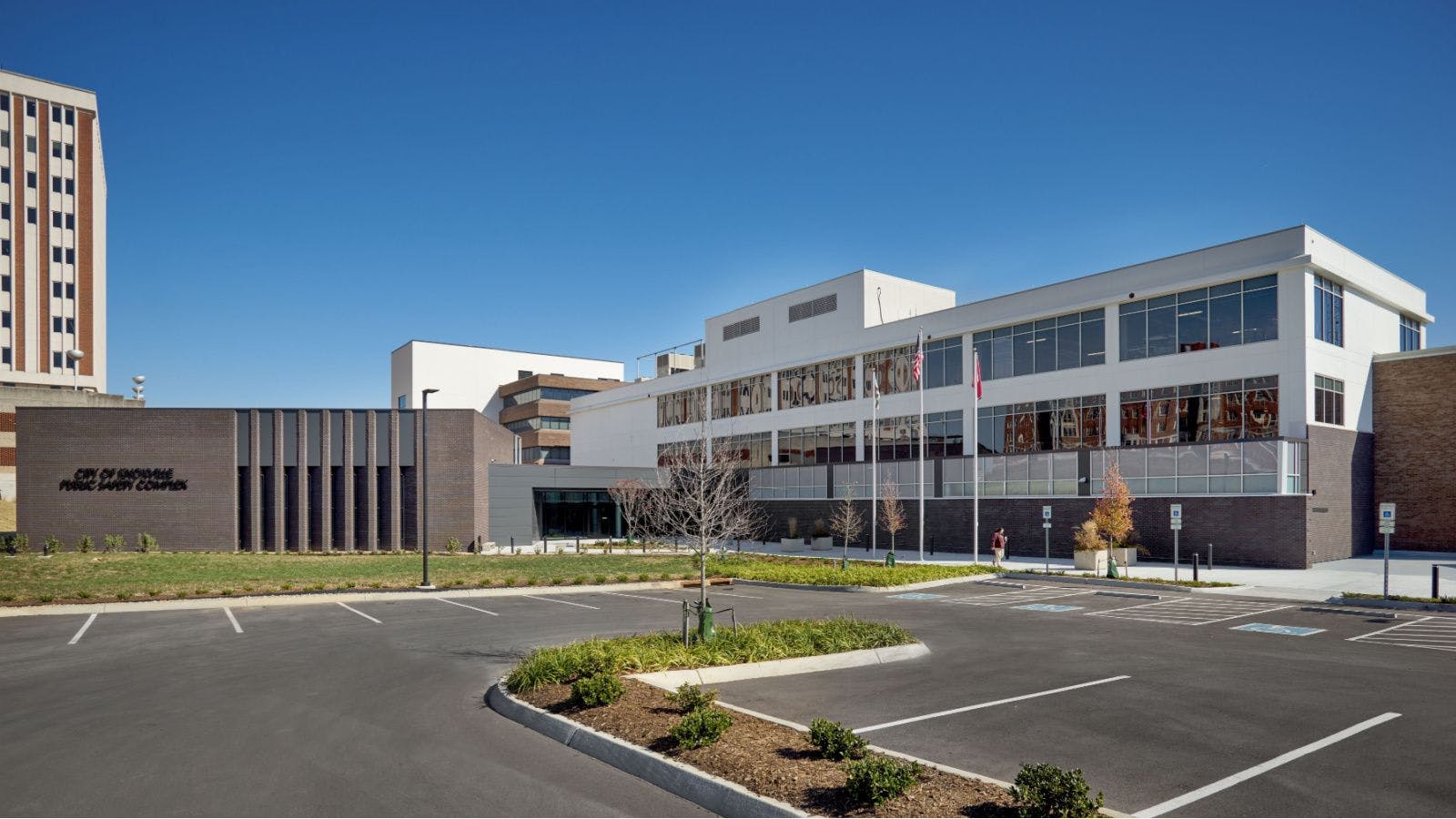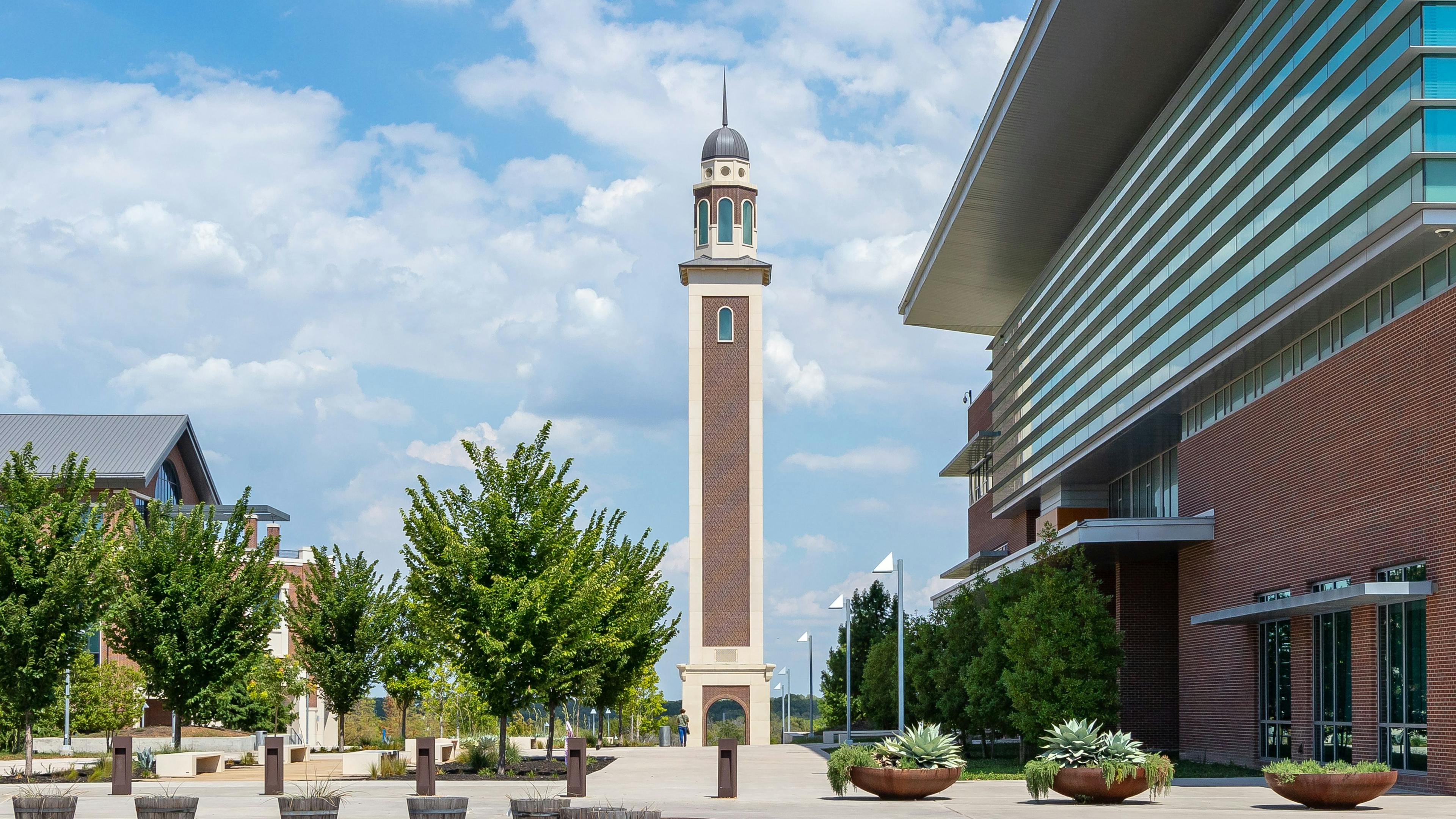
A Delicate Demolition
When Jason Hess first started walking the grounds of the onetime Catholic hospital that was slated to become the City of Knoxville’s Public Safety Complex, there weren’t any firefighters or police officers around. Instead, Hess—a senior project manager with Messer Construction Co. who began preparing the jobsite in November 2019—saw signs of what St. Mary’s Hospital had meant to the city for the past 90 years: People were still looking for medical care.
“Nearly every inch of the hospital was shut down, but one doctor’s office remained open until the day before the demolition began in January of 2020,” Hess says. “And even after buildings started coming down, some patients were still arriving and looking for a doctor.”
While Hess was focused on writing a new chapter for the campus, he made sure that the project was respectful of the past and all the people who had spent time at the hospital. In the leadup to demolition, the team uncovered a number of relics, including hand-carved stone crosses, marble inscriptions that documented the hospital’s founders and a religious sculpture that eventually was donated to a local church.
“Capturing all those elements and being able to reuse them,” Hess says, “is a very positive element of what the team did early on in the project.”
WHAT LIES BENEATH
When St. Mary’s opened its doors in 1930, it felt like a miracle. The hospital had managed to secure $300,000 in funding at the start of the Great Depression to build what the Knoxville Journal called an “ultra-modern” and “luxurious” facility. Over the years, one building with 75 beds expanded to 10 buildings on a 1.5-million-square-foot campus that eventually became Physicians Regional Medical Center.
Eventually, many of the patient-care services moved out, and the medical center closed in 2018. Knoxville had a new vision to use the site for a Public Safety Complex that would bring together a range of different city agencies, including the police and fire departments, City Court and the pension system. While the mayor proposed an initial budget of $40 million for the project, the investment wound up closer to $70 million by the time of completion.
Plans called for keeping St. Mary’s original, gothic-style building—constructed in 1929 at the top of a hill in the center of the campus—but demoing the building next to it, located approximately 30 feet away and known as the patient wing. Unfortunately, during a previous expansion, a prior contractor had excavated 50 feet underneath the 1929 building to accommodate two stories below grade in the patient wing. Now, there were concerns about the possibility of structural failure. Unable to find any historical drawings or records from the original construction, Hess’ team excavated a bit north of the patient wing and discovered a set of staggered, 30-inch concrete piles around 15 feet below grade.
“None of our engineers knew how the piles were made or would sign off on whether they could continue to support the 1929 building,” Hess says. “So, we ended up selectively choosing eight of them, lopping off the top and calling a third party to come out to do pile-integrity testing. They sent vibrations through the concrete piles to determine the integrity and the depth of the piles, to figure out if the existing system had enough support steel contained within them.”
In addition to uncertainties about materials used in the building, Hess was concerned about whether there might be unsheltered people living among the vacant spaces on the sprawling campus. “From a safety perspective,” he says, “we had to make sure that no one had taken occupancy in any of the spaces before demolition.”
BRICK BY BRICK
The demolition process involved two phases: a 10-month stretch that included internal demolition and abatement of buildings with asbestos that were slated to be renovated, followed by another mass demolition that lasted 11 months. All in all, Messer’s project team needed to demolish more than 800,000 square feet of space—representing seven of the site’s original 10 buildings. While that work continued, pandemic-related supply-chain challenges were wreaking havoc on pricing for the renovation phase of the project, which was originally slated for completion in September 2022. Between rebidding and updating architectural drawings, the renovation work didn’t get started until early 2022.
When Hess was called for jury duty in October 2022, Messer brought in Doug Snover, a project executive, to take over. “This was a very challenging project from the word go,” Snover says. “The schedule was very difficult, and some design issues made managing all the change even more complicated.”
Despite all that stress, the administrative staff of the city’s fire department became the first tenants to occupy the spaces in February 2023. The complex officially opened its doors for all the departments in late October. “When we step back and look at it, it really is a pretty building that we’ve renovated and added to,” Snover says. “We’ve got an owner that’s thrilled with the property, and the police department and fire department are thrilled with their new space.”
Even as the new Public Safety Complex will help train new generations of Knoxville first responders, it served something of a similar function for Messer’s emerging cast of leaders. “We had a couple young engineers learn lots of valuable lessons and earn lots of stripes on this project that will serve them well down the road,” Snover says.
The site that Hess first toured nearly four years ago won’t completely disappear from Knoxville’s memory. Messer salvaged around 2,000 bricks from the façade of the east and west wings—two demolished facilities that were closest in age to the original 1929 building—and made them available at Mayor Indya Kincannon’s 2022 State of the City address as a keepsake for attendees.
“It seems like everybody in the Knoxville area either had a direct connection or a family connection to the original St. Mary’s,” Hess says. “They were born there, or their kids were born there. Maybe their parents worked there. It feels good to play a role in helping the public be able to honor that history.”
Related stories








